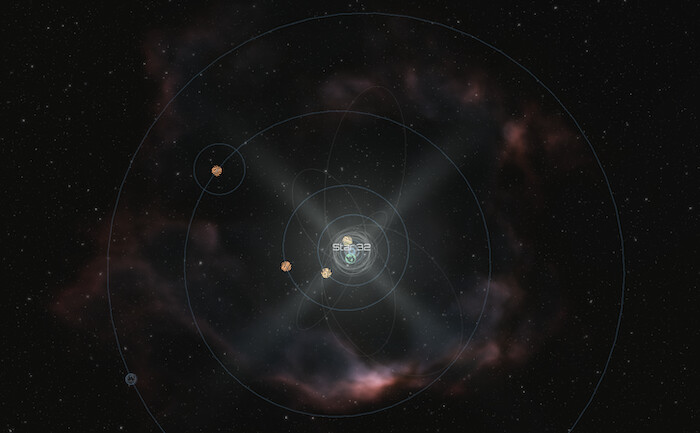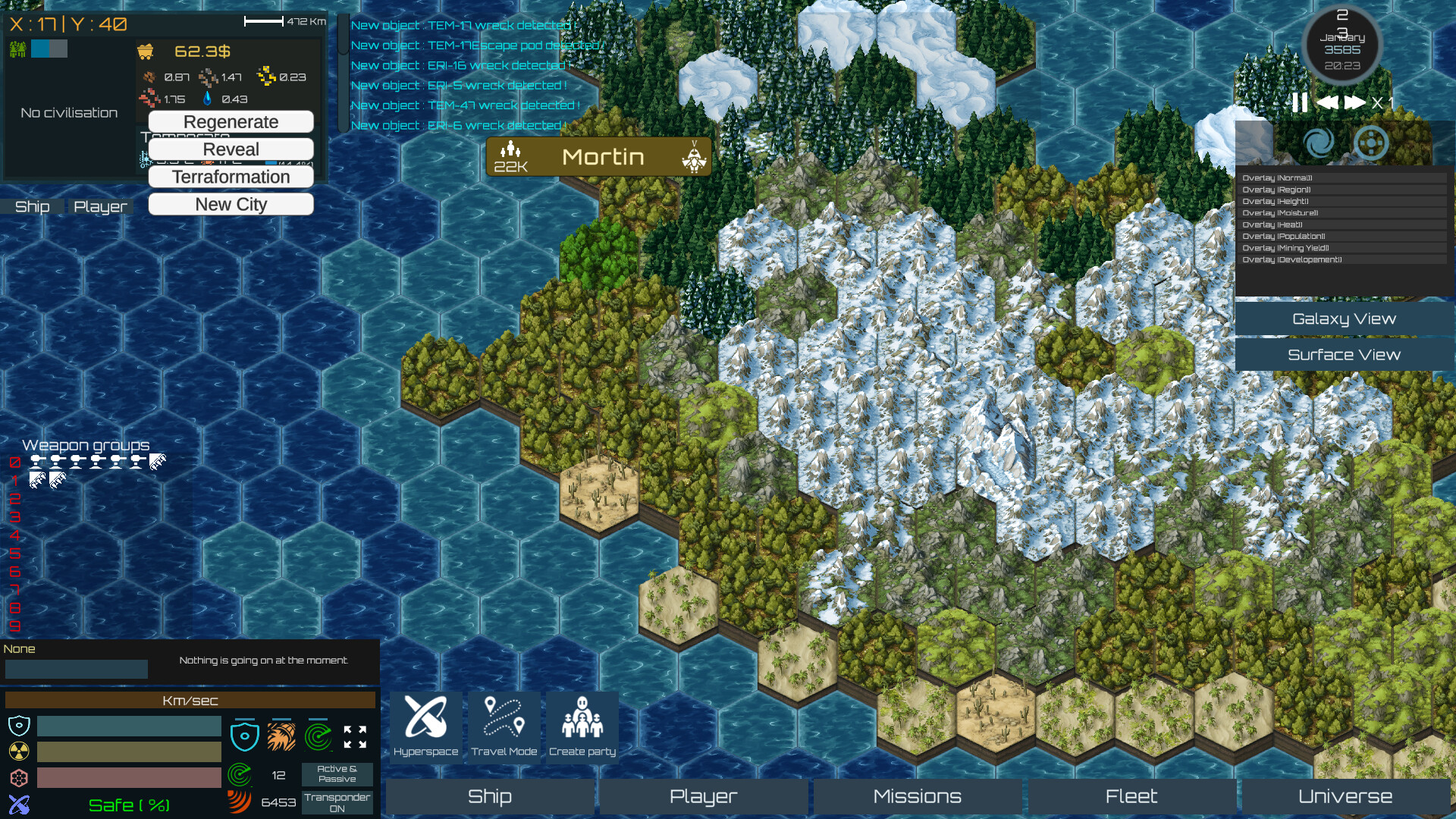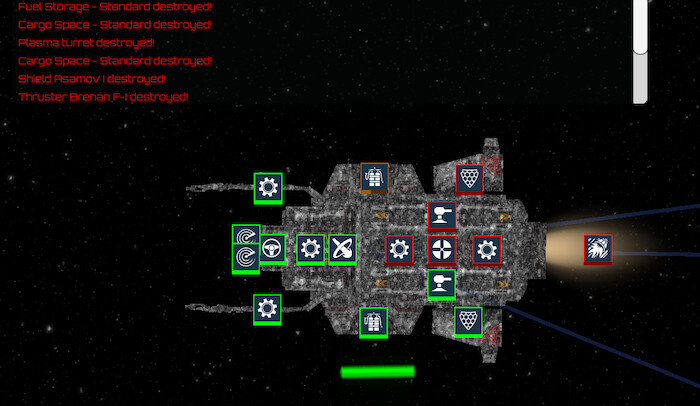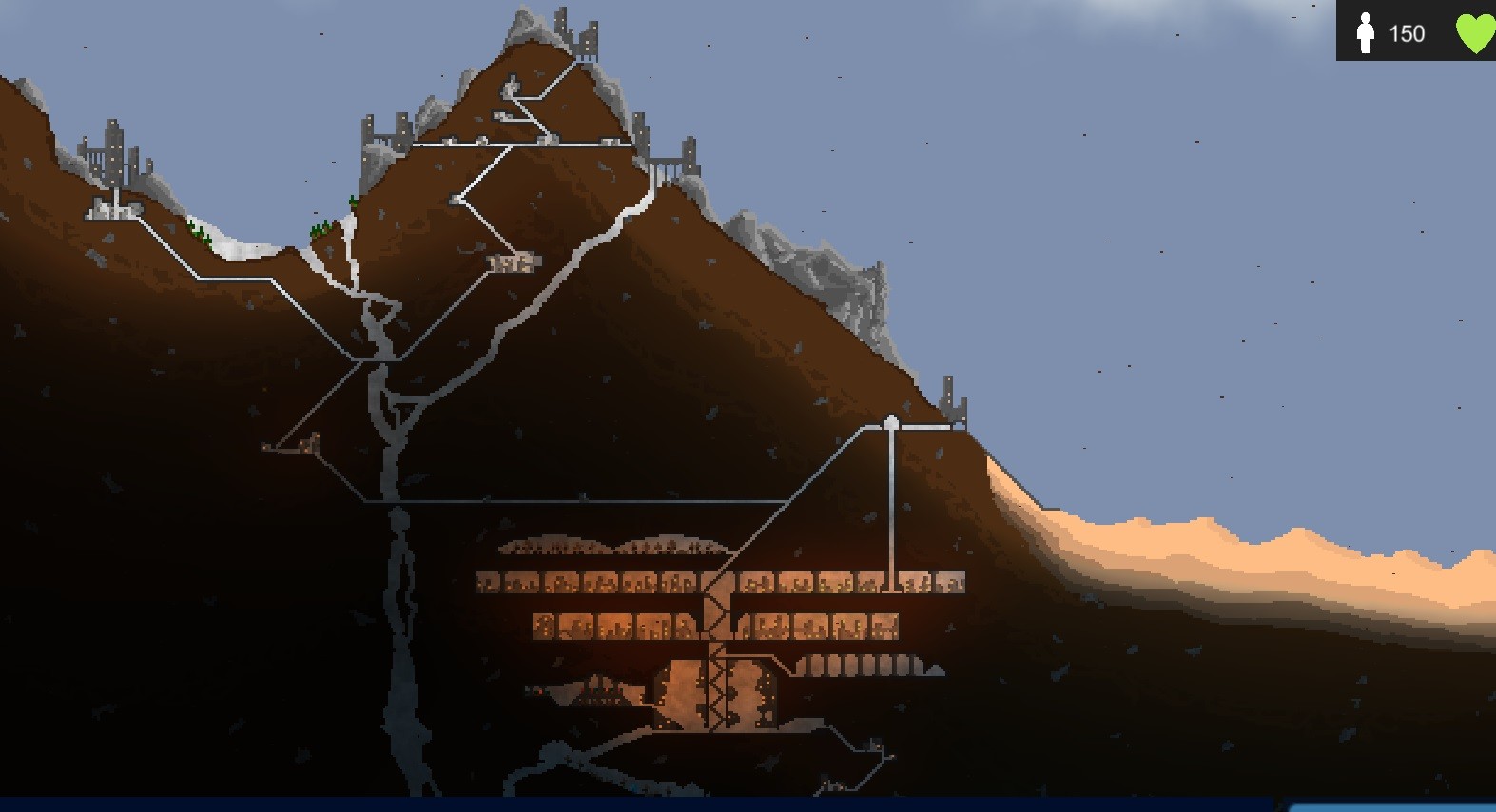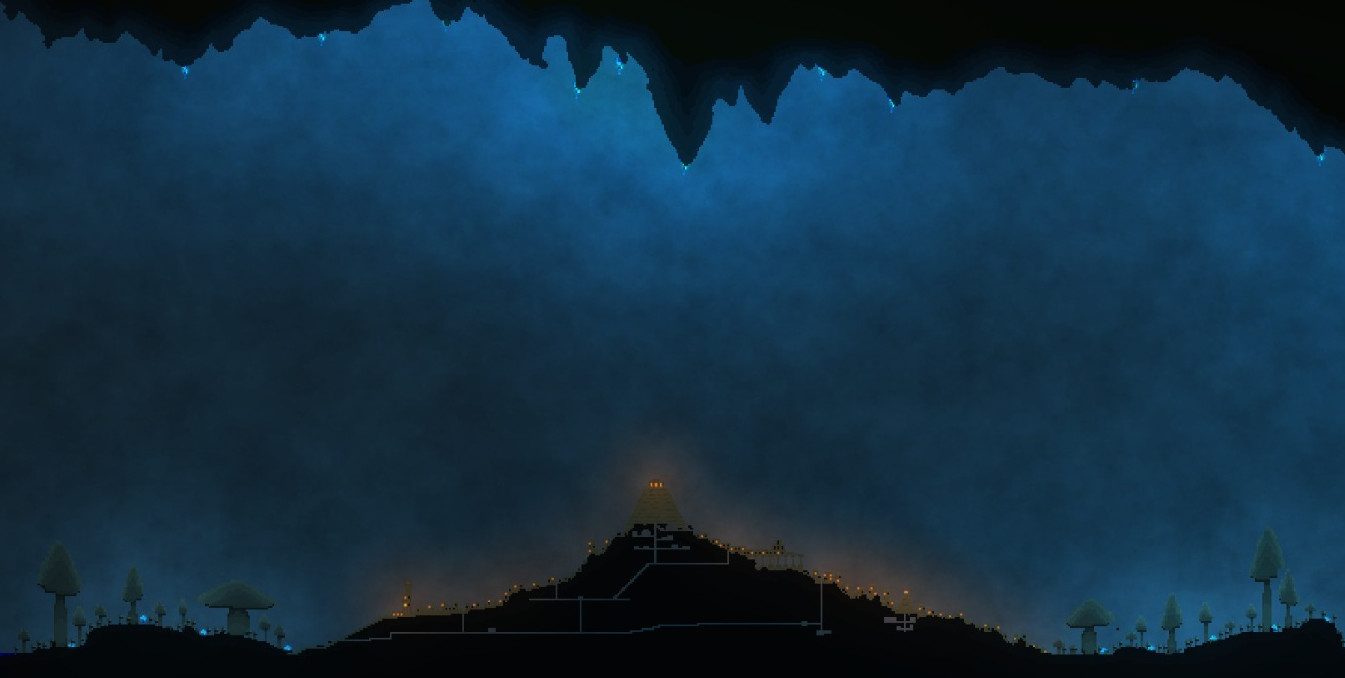

Antimatter is a strategy game in a simulated galaxy where you create and incarnate a character.
In command of your spaceship, trade, fight, explore or lead an interstellar empire.
You will dive into a complex universe where you, a mere player, is the insignificant cog of a cruel simulation.
Features
- Thousands of systems and planets to explore in a gigantic instantiated galaxy.
- A dynamic universe where dozens of factions struggle for power or survival.
- Take command of a spaceship, trade, mine, harvest, scavenge, produce and participate in the simulated economy.
- Manage an existing city or found a new colony on any planet.
- Climb the political ladder of a commercial corporation or a sovereign organisation, or found a new one from scratch.
- Interact with AI characters who are living independant and simulated life in the Antimatter universe.
- Terraform entire planets by altering their atmospheric compositions.
- Fulfil missions for corporations, factions or individuals, or unravel the secrets of this galaxy.
- Get involved in the Antimatter Crisis and try to change yourself the course of history.
How To play ?
Antimatter is a RPG that plays as a grand strategy game, you have neither omniscience or omnipotence, most of your responsibility can be delegated to spaceship captains and governors if you control any territory.
No micromanagement is required, you have the freedom to deal with the businesses that interests you the most.
Antimatter plays in the intersideral space, on the planet's surface or in the mysterious undergrounds, you can play all the way from a space journeyman to a galactic emperor.
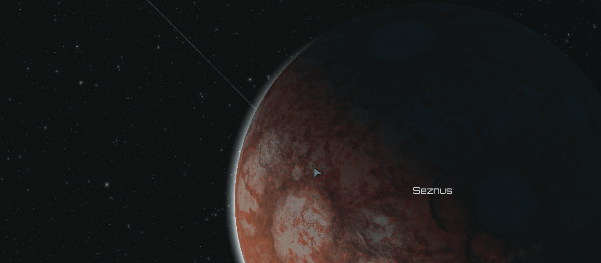
Create and customise your galaxy with all available options, such as the stellar systems count and types or the historical events that will impact the simulation of civilisations through the ages.- An universe generated and simulated across billions of years with a realistic accretion model of gas and dust.
- A simulation of civilisations through thousands of years, filled with historical events.
- Asteroids, comets, nebulae, planets and many other astral objects to explore.

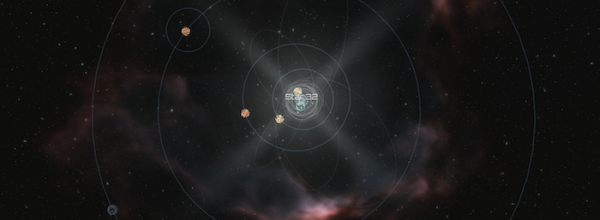


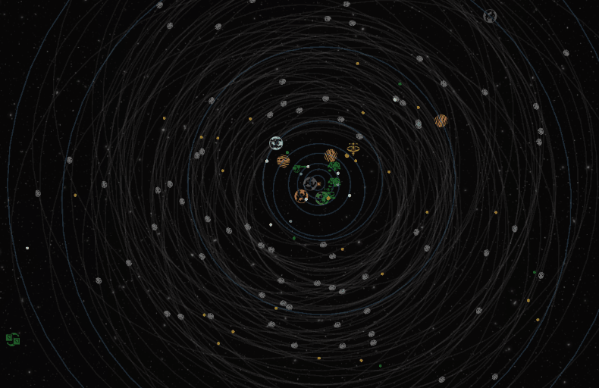
- A wide range of planets, entirely simulated and procedurally generated.
- A procedurally generated geology.
- A realistic and dynamic atmospheric simulation.
- Terraform entire planets by altering their atmospheric composition.
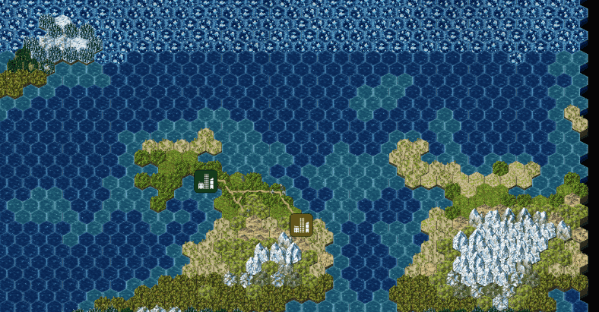
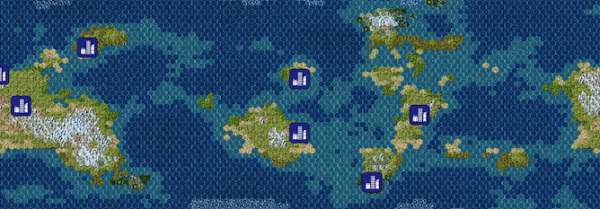
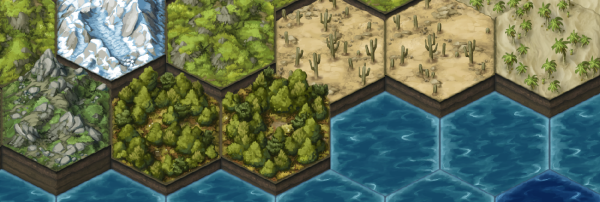

All civilisations are procedurally generated and simulated through thousands of years. Ruins, monuments, POIs and ancient artefacts exist thanks to this detailed simulation.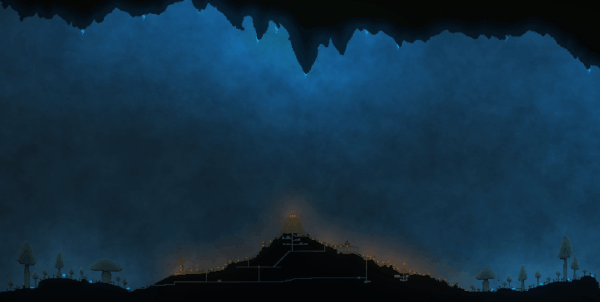

- Manage your crew and the specialty of your crewmembers.
- Customise your spaceship with many modules and choose from dozens of different spaceships.
- A radar simulation with passive and active detection, which rewards stealth and reconnaissance.
- A varied range of weapons, such as missiles capable of crossing millions of kilometres.
- Manage your fleet and hosted ships.
- Land on any planet or asteroid in the galaxy.
- Study and harvest exoctic flora.
- Meet and profit from ancient civilisations.
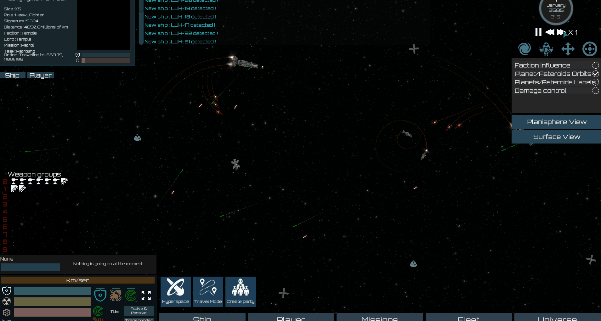
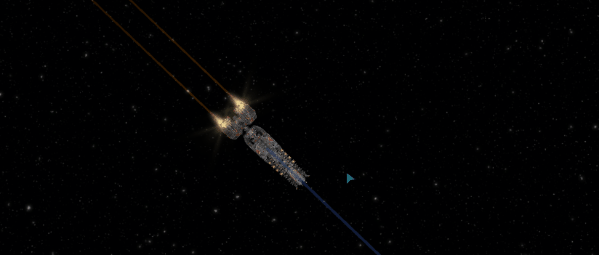
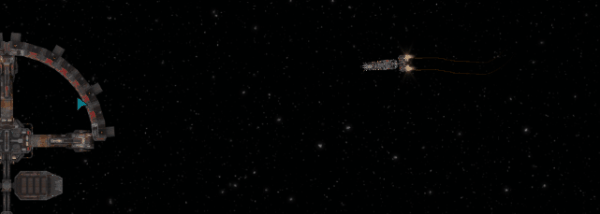
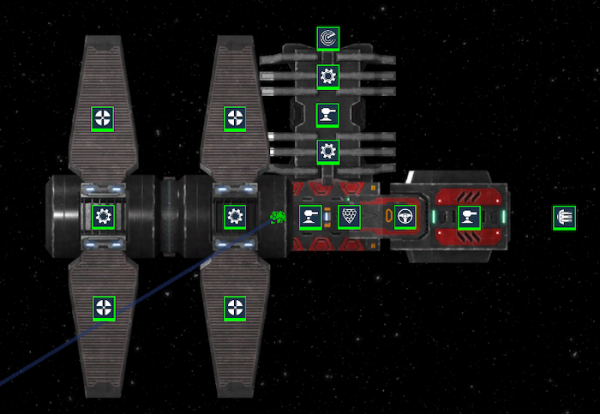
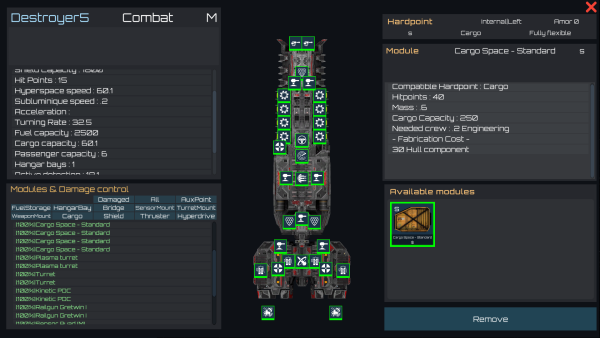

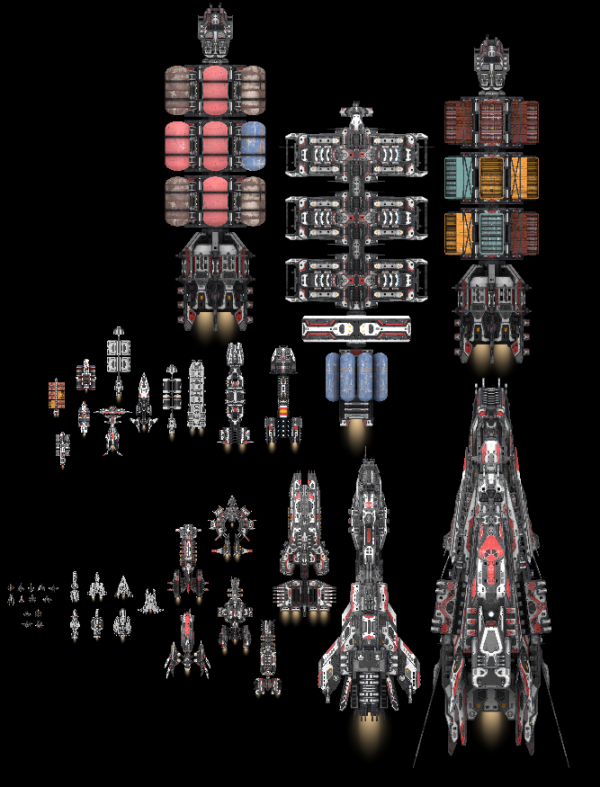

- Create and incarnate a character, define his physical and psychological traits, his education, characteristic and skills and his appearance.
- NPCs have their life simulated from birth, each trait and characteristics come from an experience in their lives.
- NPCs have their own artificial intelligence, they act by themselves with the same liberty as the player. You are not the only actor in this universe. NPCs also contribute to the political system of organisations.
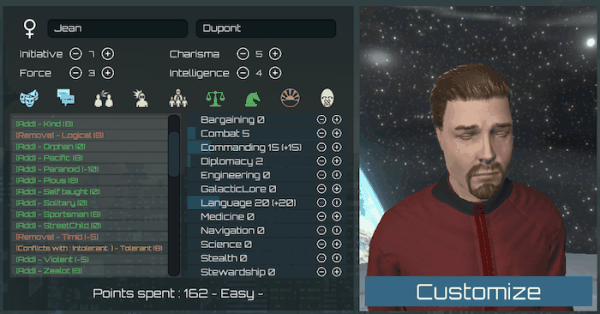



Create, or be part of a commercial corporation, a sovereign state or a criminal organisation, fulfil missions and climb the ladder of the organisation.- Trade goods.
- Mine and harvest ressources and objects.
- Manage and build space stations, and produce new spaceships.
- Embrace a pirate's life with extorsions and deceiving actions.
- Administrate cities and territories, or lead an entire empire.
- Participate in the organisation's political intrigues.
- Lead and organise a fleet by using your influence.

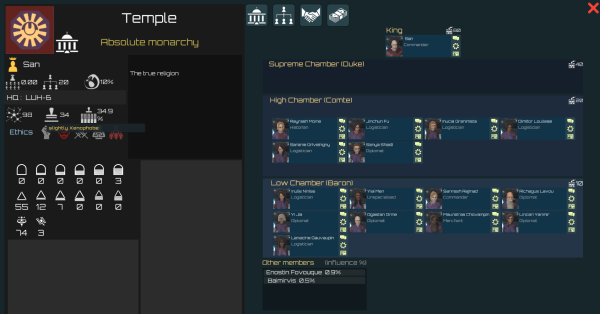
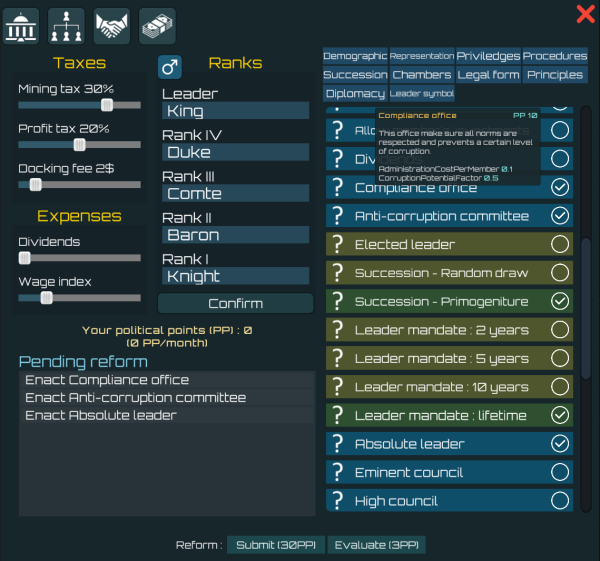
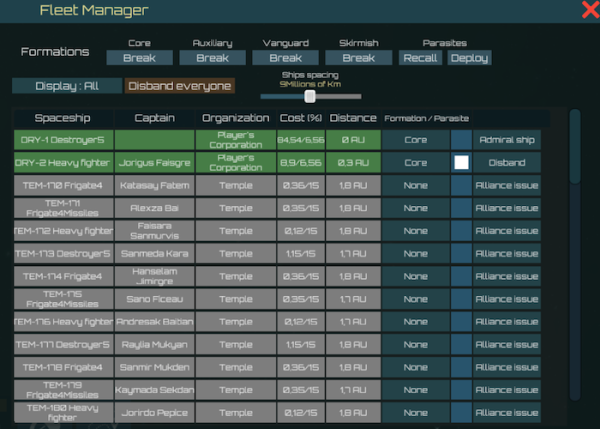
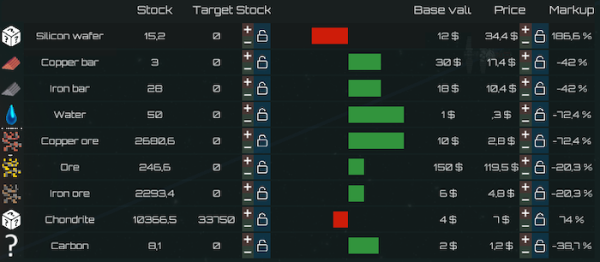

THe terrain of each planetary region (tile) can be explored and can even be the location of a colony. Each region has its own geology, a simulated biosphere and can host ancient ruins generated during the historical simulation.- Manage the city's industry, trade, demography and its political aspects.
- Plan the city's defences against orbital threats.
- Develop and extend the city's frontier across the planet.
- Explore deep and mysterious subterranean regions.
- A destructible environment and a liquid simulation.
- A dynamic weather system.
- A monstruous fauna (only giant worms for now).
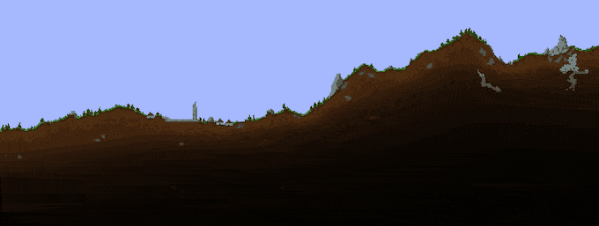
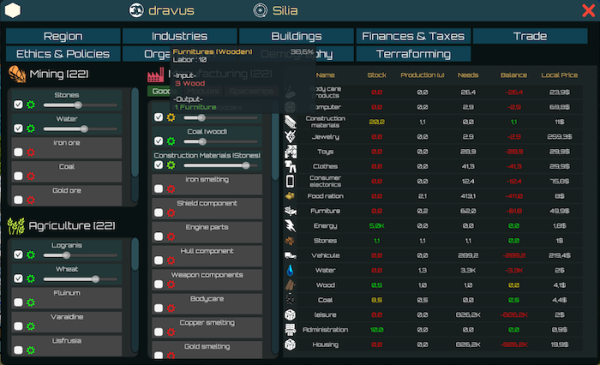
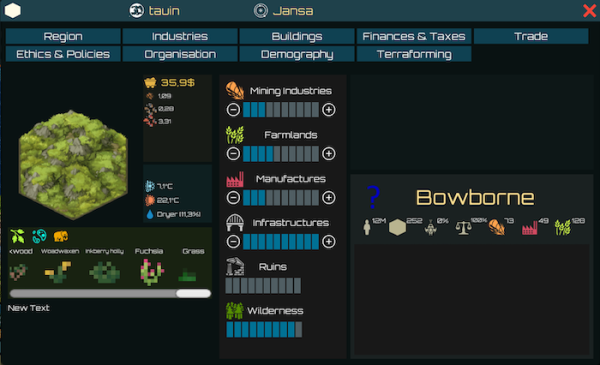
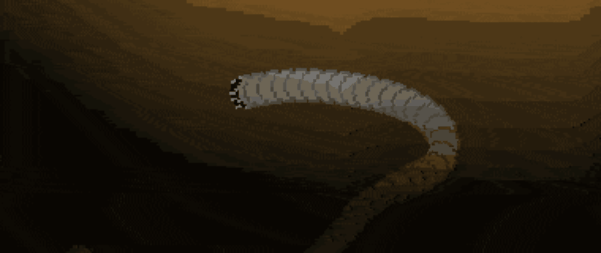
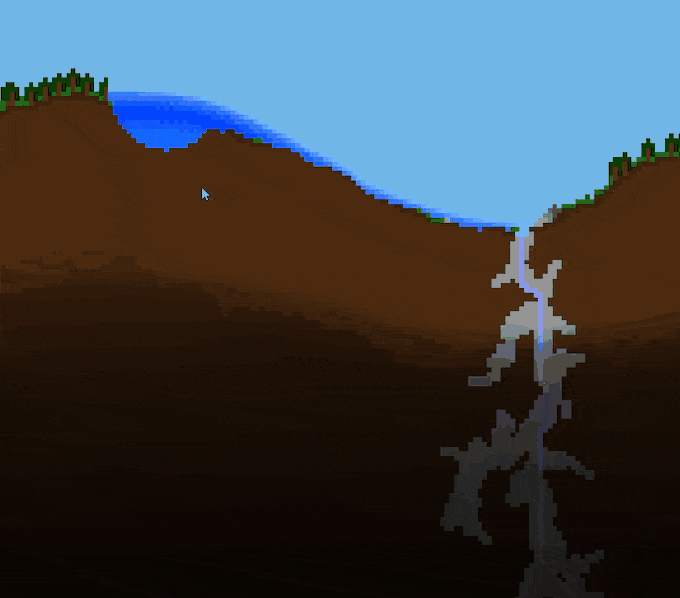

Change the climate of an entire planet by slowly modifying its atmospheric composition, observe the chain reactions on its geology, hydrosphere and its biosphere thanks to a detailed and realistic atmospheric simulation.
The flora is entirely simulated where each species' reign depends on local conditions and the other competing species.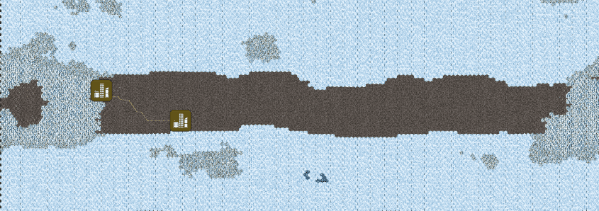
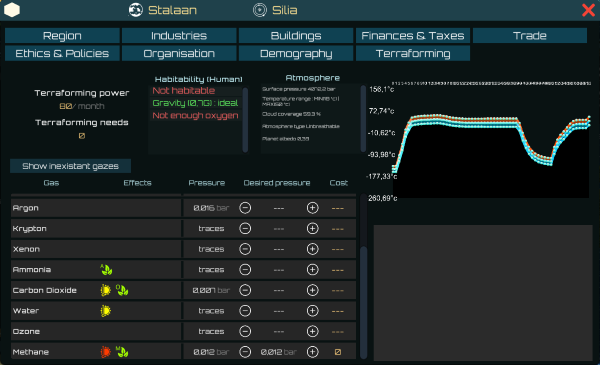
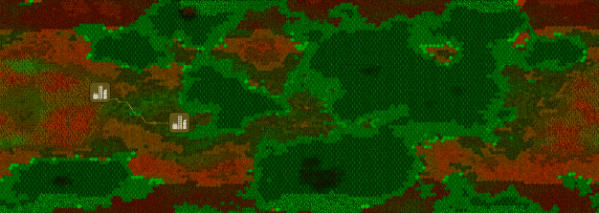
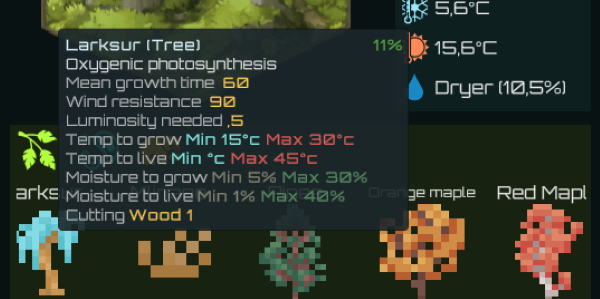
Hello everyone,
Its been a while, but heres a sneak peek at part of my recent work:
--- PRIVATE ALPHA ---
Learning from the lessons of the private alpha, the past month has been spent working on a major update that will introduce a more consolidated version of the game.
This includes the usual fundamental work on core features, but also the addition of more comprehensive and streamlined gameplay loops, within a smaller yet denser playground.
Theres no new build just yet, I plan to release a new version with these features within the next month.
For the past two weeks, Ive been working hard on a major update to the game. However, I still need about another week before it's ready for release to the private alpha and before I can reveal the full scope of this work.
In the meantime, Ive decided to upload a devlog on a completely different topic: lifeforms. In it, I describe the connection between the agricultural economic sector, lifeforms, and terraformation. Enjoy!
The thumbnail is not misleading, Antimatter is primarly about giant worms and mushrooms, and you have certainly wishlisted the game for these 2 reasons.
This weeks devlog focuses on a new feature that explores indirect power in even more depth.
--------------------
PRIVATE ALPHA--------------------
Note: This version is a bit unstable, but next version will be more focused on consolidating the new features and improving overall stability of the game.
Version B0005 12-05-2025
Focused on game UI/UX, improved politics mechanics and UI, introduced Marshal, Command Points, and the military rally system. Includes numerous bug fixes, tweaks, and major performance improvements.
Overhauled Galaxy Object/Assets Widget UI and UX
Unified system for all registerable items
Improved context menus and tooltips
Owned/allocated assets are now marked with a green ribbon
Generalized interaction system for missions, fleet roles, etc.
Revised Universe UI with more detailed widgets and filters
Improved fleet asset interaction
Restored Planisphere Overlay System and Region Names
Overlays such as population density, moisture, region boundaries, etc. are functional again
Added Marshal Role and Election/Appointment
A special organizational role for spaceship commanders,
The Marshal is the supreme leader of all armed forces.
Can interact with theatres and rally willing commanders.
Added Command Point System
Required for theatre creation/maintenance and rallying
Exceeding limit adds +500 empire size per point, burdening administration
New Building: Command & Control Center
Provides 1 Command Point
[b]
Added Rally System[/b]
Allows the Marshal to rally willing commanders to operate near them with autonomy
New Organization Policies
Unified Command All subordinate commanders follow central orders
Local Command Authority Commanders retain autonomy; rallying is free
Appointed Marshal Designated by high command for loyalty and coordination
Elected Marshal Chosen by peer vote, reflecting popularity and field support
Improved Election UI/UX
Color-coded voters and candidates
Better tooltips and additional interactions
Improved Election Logic
More accurate evaluation of candidates
Bug Fixes and Tweaks
Fixed: Strategic icons of spaceships could disappear
Fixed: Strategic icons misaligned (wrong pivot point)
Fixed: Tooltips with incorrect window size
Fixed: Crash in inventory system
Fixed/Revised: Proxy inventory and associated bank account system
Fixed: crew members employed without an organization
Fixed: Pick up space object task could crash on rare occasions
Many small additions, performance improvements, and minor fixes
A new video devlog about the main work of this week :
And a new version was released the 4th of may---------------------
PRIVATE ALPHA - Update B0004---------------------
Release Date: 04-05-2025
Focus: Trade AI, UI/UX revision, improved missions, better planet rendering, and essential tweaks and fixes.
Trade Line system + UI/UX
A global system generating and tracking trade lines, used by AIs and the player.
Revised Trade AI
A major change to how trade opportunities are evaluated.
Trade node improvement
Overhauled trade node system to be much more reliable and efficient.
Better UI/UX for trade node
Trade node UI has been reworked entirely, and many tooltips and context menus were implemented.
Reworked and improved passenger transport AI
Passenger transport logic has been reworked for better behavior and planning.
Improved planet rendering
3 new types of forests, 3 new types of mountains, improved forest transitions, and implemented visual assets (added outpost graphics).
Localization: around a hundred new strings
Localization has been expanded with approximately 100 new strings.
Improved save/load with better version tracking/UI
Save/load interface now includes better version tracking and usability.
Sounds effects restored
Previously missing sound effects have been restored.
UI/UX: Added the strategic view
A new strategic view has been added to support large-scale decision-making.
Fixed icon scaling causing object lack visible strategic icons + some improvements on icons and text scaling and performances
Resolved issues with icon scaling and improved performance related to icons and text.
Fixed: Replicant nest generation was not affected by game settings and tweaked generation chances.
Nest generation now respects game settings and generation chances have been adjusted.
Fixed: mushrooms were competing with surface flora reigns, causing them to sometimes take over entire planets.
Impossible to land on planet in some situations
Fixed an issue where landing on planets could become impossible under certain conditions.
Disabled Sol system
The Sol system has been temporarily disabled.
Many fixes and tweaks
A wide range of additional minor fixes and adjustments have been made.
This week, I have mainly focused on creating external tools to help with the production of assets for the planet surface. I have also almost completed the new rendering engine and created some tiles, textures, and masks. This preliminary work is essential for improving productivity in the coming months.
Finally, thanks to the new surface rendering system, I am planning a major UI paradigm shift for colony and outpost management. I want to transfer as much of the region management and visualization as possible to the planisphere view, and rework the city/outpost UI so that it complements it without redundancy.
**********************************************************************
Private Alpha
You can see the early work when accessing the planet. A lot more will be done for the planet surface rendering in the following weeks, so I am still flagging this area with a big "WIP". (Testing here is not really important, and I still recommend avoiding this area of the game.)
I have only worked yesterday evening and today on bugfixes, so the game hasn't gained much in terms of stability compared to B0001.
The AI is next on my list: a massive rewrite before the private alpha sort of broke the system (which was quite expected) and it now needs some superficial rewiring. I made some progress today, but my intention is to do a clean and fundamental rework. Therefore, I am scheduling most of the AI fixes for the next build. The AI structure is quite robust now, so I am not worried about this.
As usual, save games are not compatible between builds.
Version: B0002 CHANGELOG
Release Date: 28-04-2025Description: Focused on the new planet surface renderer. Some bugfixes and tweaks.
Major Change to Planet Surface Rendering and Generation
Phase 1 of the planisphere revamp is now complete. Rendering is fully dynamic, and many tools have been developed for the creation of tiles and textures. This early version also includes a range of assets. It is an entirely new system, laying the foundation for much better planet generation. The UI has also been improved.
Simulation: Generation has been enhanced for more realistic noise patterns, and soil fertility per tile has been added to create more varied forests. The code has also been improved for better performance and reliability.
Fixed: Gamedata access could cause some rare crashes
Fixed/Tweaked (Character) : General improvement on traits and skill UI + Performance increase for characters
-(UI) Skill bar not clamped to 0-1
-(UI) Improved display of skill values, attribute values
-Improved tooltips with display of modifiers (character creation and character sheet)
-(Architecture) Traits are now index-based improving code quality, performance, and memory footprint of any character
-Attributes fully localized
Fixed/Tweaked: Refactor of how populations are computed and stored
-Removes entirely the caching system of population and replaced with a high-performance on-demand computation, improving reliability and memory footprint of cities' population.
-Fixes issue when loading a save where population was not precomputed.
MAJOR FLAW - GUID Index for all registerables was starting at 0 instead of 1
This essentially broke everything relying on 'null' state for shallow reference (it is a miracle the game could function with this issue).
Fixed: Issues on city coordinate system
-Revamped cities coordinate system to use the unified, shallow reference one.
-Made PlanisphereObject_Abstract and PlanispherePosition serializable as it should, fixing saving system for related objects (tile features, cities, etc.)
Fixed: City reports could was not properly saved and loaded
Fixed: Some tooltips in the object selection card were quickly disappearing (<1sec)
Fixed: Mission markers/Reference points persisted across game sessions
Fixed: EventsHistory for city was not properly saved
Fixed: Rare bug where universe generation could crash if one of the historical cities could not find a viable tile to colonize
Tweaked (QOL) : Set course to own spaceship remains enabled unless another ship under direct control is selected
Fixed: Player's inventory was partially broken
Fixed: AI Mission and Task now properly show the type instead of 'Generic' Mission/Task type fully localized
Fixed: Various AI bug
Fixed: Trade node evaluation sometimes failing
Hack: Temporarily disabled 'wait until parasites are recovered' system for fleets
First week of testing, and I want to address a huge thank you to the testers who provided valuable feedback. Here's a new video devlog about future plans.
A new website for Antimatter was launched today, where a press kit and a press release for this private alpha is available :
Press Kit: https://www.antimatter4x.space/index.php/press/
Press release: https://www.antimatter4x.space/index.php/2025/04/16/antimatter-enters-private-alpha-exclusive-access-now-available-for-eligible-kickstarter-backers/
A new version (B0001) of Antimatter has released for the testers !
Version: B0001 - CHANGELOG
Release Date: 20-04-2025Description: Focused on critical bugs, industry simulation, subsistence economy, UI fixes, galaxy generation stability, organization share/influence mecanisms and error logging.
- Fixed/Improved: Mission consequences, rewards, and penalties
Fixed the UI that was no longer working as intended when displaying these items
Various UI improvements
Added some generic icons in the resources
- Fixed: Flawed mission generation 'Assassination for extortion' causing simulation to fail
The weight-based random selector for selecting a target organization for extortion could fail due to an integer overflow.
- Fixed: Historical generation could partially fail due to a flaw in population growth simulation and native migration
- Added: General exception and logging handler
Error logs are located in AppData/LocalLow/Antimatter/Logs
Logs are only produced if an exception is thrown. It also contains hardware info for debugging purposes.
- Fixed: Tooltip scaling on different screen resolutions/DPI with added dynamic sizing
- Fixed/Improved: Population balance display in city monthly report
Includes code quality and performance improvements on demographic report storage.
- Fixed: UI panels could stay active when exiting the current game
- Fixed (AI/Action): Course destination for spaceship not defaulting to Invalid, 'Cancel Course' action not working as intended
This also fixes the issue with the course line being rendered for the player ship (blue line).
- Fixed: The game now selects the first valid playable faction at game start to prevent a crash when none is selected after galaxy generation
- Fixed/Tweaked: Save/load support for in-game messages, mails are now cleared properly between games
- Fixed: Crash when saving caused by some fleet compositions
- Fixed: Mouse wheel zoom now correctly disabled when UI has focus (map, character, ship view)
- Fixed UI/UX: General pass on scroll bar sensitivity (115 items modified)
- Industries & Subsistence - Major Update (Simulation)
Fixed industry AI being disabled due to recent changes
Fixed cities in warm-up phase not receiving a grace period before consuming vital goods
Fixed subsistence sector not properly handling unemployment during city warm-up
Reworked the subsistence production cycle for better performance and mod support
Subsistence is now fully moddable and race-bound (non-human natives supported)
Hydroponic industries rebalanced for improved productivity
Production lines and population computations optimized
Prevented water body regions from being picked for industrial investment
Improved build order AI logic and performance when selecting industries and regions
- Fixed: Being kicked out of an organization due to low reputation caused loop of being kicked indefinitively
- Added: A changelog system
- Fixed: Character's reputation could sometimes start at 0 if the latter was indefined
- Fixed: Being kicked out of an organization due to low reputation caused loop of being kicked indefinitively
- Shares & Influence - Major Update (Simulation)
A complete rewrite of the share/influence system backend greatly improving performance and robustness of code.
It also introduces better share exchange mecanisms (including dilution options) and also floating shares which is a corporation-owned share reserve which is fully liquid.
Bid-ask spread factor is not longer fixed and is now exposed for modifications (through policies).
- UI/UX tweak: Reworked spaceship navigation & fixed 'charging hyperspace' action that couldn't be used (to abort charging)
Removed manual/travel mode concepts entirely as 'travel mode' is now implicit to the presence of a waypoint.
- Fixed (AI): Drop off cargo task was always failing
- Fixed: Rendering could be glitched while the game is paused
- Tweaked: Abusive requisition threshold is now more forgiving for the player
- Tweaked: A character can't be expelled from his organization due to low reputation if he has >50% share/influence
- Fixed: Soft crash when loading a new save while selecting some target
- Fixed: Fundamental flaw for planets - Was breaking some saves (but could break anything in the simulation) - significantly improves performances as well
Planet had a sluggish Equals override (now removed) that could silently break hashsets (Why would I do that, WHY ???)
- Fixed/Tweaked: Loading tradenodes is now faster and more robust
- Fixed: Fundamental data issue for AI Action state and GalacticCoordinate_Struct, especially visible when loading a game
The 16th of April was a big day for me, as I released the first version of the private alpha, Build #0000.
This alpha is currently reserved for a specific contributor tier from the 2020 Kickstarter campaign, but I plan to extend access in the future.Join the Discord server to stay tuned for alpha testing
Another noteworthy update is that I am now working part-time at my day job, which means I can dedicate more time to developing Antimatter.
I've also posted a video devlog in which I benchmark the game while multiple space battles occur simultaneously in different parts of the galaxy :
I have already talked about this so-called "endgame crisis" here . Here a new video devlog giving additional details about this global threat.
One important aspect I forgot to mention in the video is the in-game editor mode.
I use it to debug and create scenarios on the fly, but this is going to be a powerful tool to customize the universe or test mods.
Most entities in the game can be interacted with, showing a context menu. When in editor mode, more options are availables.
A new devlog on politics. There is much more to say about the systems currently in place, but this video outlines the main aspects:
For next week, I'll talk in depth about (space) politic.
Hello everyone, enjoy this new video devlog.
Also, you'll notice the solar system being in the game. This is recent work allowing for custom stellar systems (and I have added sol for the example).
Furthermore, it is now possible to define custom height/heat/moisture map for planetary bodies.
Here I have applied an earth heigtmap I found to a random terrestrial planet that ressemble to Earth. But with more work it is possible to get very accurate results !

A new video devlog describing how the market economy works in Antimatter.
Check out this new video !
This is a work in progress of the ship editor, which is purely a productivity tool with all the keyboard shortcuts and hacks one can expect from it.
Here another commented video devlog where I start an expedition to found an outpost in a habitable planet. Outposts are simplified and privately-owned colonies.
Learn more about how influence and fleet command work with this new video devlog.
Heres a new trailer showcasing the progress in 2024, with a click-bait title to lure more poor souls.
Lifeforms

Secondly, I have worked hard on improving terraformation and the simulation of lifeforms.
I have introduced fauna and microorganisms, with special characteristics setting them apart from flora.
Fauna simulates a very basic food-chain system, enhancing the simulation of biodiversity.

The largest improvement is the introduction of a "seed" system, as I call it. It is the strength of introduction of a species on a planet and influences its adaptation score. So now lifeforms are not guaranteed to be present on a viable planet; they have to be introduced. This improves diversity significantly and allows some weaker species to compete and thrive.

Terraformation facilities can therefore be used for both lifeform introduction (or extermination) and atmospheric alterations.
The UI for gases was reworked as well, with a lot of QoL improvements.
Localization
I have initiated localization of the game and about 1500 string keys are bound already. I am glad to say that the game and all mods will be very easy to translate (a single file).I speak French and can muddle through a bit of English, so both languages are included as core languages.

For the rest of the languages, I wrote a program that automatically translates the game through the GPT API by incorporating already translated languages and context. The more core languages, the better the generated translations will be. I am confident that after some training, most languages will have a proper translation.
The following languages will be supported at release:
French and English as core languages. Chinese, German, Spanish, Italian, Russian, Japanese, and Korean as auto-translated languages, initially.
This is a special update to wrap up the year, with a few thematic videos.
I hope you all enjoyed 2024, and I wish you an excellent new year!
All these videos are used to improve the Steam page quality. I am planning to create at least 5 more videos on different themes.
Are we there yet?
(The most asked question)No, I am still not confident in having a private alpha yet. As a reminder, this initial alpha will be reserved for the backers of the Kickstarter campaign (hence "private"). There will be no exceptions.
Obviously, I am not holding a release out of malicious intent or over-cautiousness but because not everything in my professional life is under my strict control, and I have some duties. Additionally, a poorly timed alpha may burden my workload and consume the little free time I have to work on the game (actual dev time - the meat of "work done").
All I can say is that the game, the software, is in excellent technical shape, and I am very optimistic.
Bonus
A discussion on the Discord server pushed me into doing some benchmark tests. Antimatter has seen major code improvements in the past months and optimizations, so I tried some extremes:This is a 15,132 stellar systems galaxy (737,252 planetary bodies) with 1,500 years of history simulated, a population of 57T (57,000,000,000,000) humans, and 757 colonized worlds.

It did generate and instantiate fine, but I haven't tried further, and let's be frank, this is probably unplayable.
It was a nice surprise though, and as a reminder, this isn't merely a usual procedural universe but one painstakingly built through accretion simulation, retained in memory, and continuously simulated! Each of the 757 colonies required a fully generated AND persistently simulated planet surface!!
On my second test, I tried a galaxy of similar size but with only 100 years of post-Antimatter crisis history.

And it is playable:
Let me get this straight, I am not teasing such a massive playable galaxy here, but that's the fruit of this continuous code structuring labor aimed at getting smooth gameplay, especially late into the game. I expect normal playthroughs to be more within the range of 20-2,000 systems.
Let's do a quick ping on progress. It has already been 2 months since the last devlog, time flies.
The focus lately has been on polishing, with particular attention to code structure and performance improvements.
I have finally reached my performance goal, with drastic improvements by multiple factors, especially for large universes.
While I try to avoid adding new features and focus on wrapping up an alpha, there are still a few outstanding features being added. Here is the tip of the iceberg:
Shipyards and Automation
Queuing orders directly from the military screen instead of micromanaging each shipyard. Shipyards will also attempt to fulfill fleet templates if no specific orders are given.


Improved Production Lines
Production lines have been reworked to make them easier to manage and visualize, supporting batched production versus individual recipes.
Regional Features
Regional features on planets can now be exploited by outposts and cities, providing effects and modifiers.
Surface exploration has become even more important, as these features can yield valuable resources.
Even replicant nests can now be exploited, they produce parts and occasionally replicant spacecrafts.

Personal Finances
New interactions and mechanics for personal finances have been added, including loans.
Boarding & Encounters
Spacecraft can now be boarded, utilizing a party-vs-party combat system.
This system is also used for all forms of dynamic or scripted encounters.


Better Missions Generation
The mission system has been completely revamped, with better generation.
Better UI for the Universe
The UI for universe display has been reworked.
New Military Screen
Most of the military aspects in Antimatter can be automated and controlled through a single screen.
Theatres
It is possible to automate force allocation and mission creation by setting theatres.
Most objects in the galaxy can be designated as a theatre. Depending on the scope, different missions will be executed. For example, a "Strike" theatre set on a star system will mean conquest of the system by destroying all enemies within it. A "Strike" theatre on a planet means orbital bombardment, while a strike on a spacecraft triggers a search-and-destroy mission.

Available fleets will automatically assign themselves to a theatre and create missions accordingly.

Even if automation is turned off, the AI will still suggest theatre options it has planned. A single click is enough to turn these suggestions into an actionable strategy.

Fleets
It is now possible to create fleet templates and let the AI replenish them automatically.
Templates consist of configurable formations, allowing flexibility in the types of spacecraft that can be included.

Each fleet has a role that determines the type of theatres it will engage with.

Fleets also have replenishment thresholds, which dictate the required strength to deploy and when they should return to base for reinforcements.

Independent Forces

Independent forces are individual spacecraft performing missions autonomously. Assigning these forces will mobilize available ships. Police forces will patrol owned systems and police theatres, while explorers will survey new planets. Operatives execute special missions such as extortion (piracy), waking replicant nests, destroying replicant nests, swaying natives, or purging natives.
Outlaws
This screen also displays characters currently outlawed by your organization. You can even track them if they are detected by the organization's sensors.
Direct Orders
I have added more contextual orders and bound them to mouse actions. This functions similarly to how it works in RTS games: you select a spaceship and give orders directly with the mouse.This is a powerful addition, offering much more tactical depth.

These orders can only be given to spacecraft that are under your command.
The path to private alpha
I am still in the polishing phase, but sometimes I come across areas of the game that require a more significant rework. The military AI, which handles fleet formation and AI mission assignments, was previously a "behind-the-scenes" feature. This has now been rewritten and refined, with all aspects of the AI exposed to the UI.As usual, as for the past few months, nothing truly flashy or groundbreaking has been added, and I am still consolidating the game for the upcoming private alpha.
However, among the hundreds of refactorings, performance improvements, bug fixes, tweaks, small additions, and the countless user interface and quality of life improvements, here are a few highlights:
The Gate
The gate is a discoverable and seemingly inert and isolated space artifact that initially behaves as a "trade node."

If fed with enough hull components and microchips, it will then activate, opening Pandora's box for humanity by allowing the replicants to invade the human part of the galaxy.
Replicants expansion
The replicant threat is worsening. Although they remain a slow-moving threat without antimatter or hyperdrive technology, they represent an inexorable force of destruction.

On its way to a fleet mining mission, this replicant mobile smelter, supported by its fleet of miners will gather and process ores into "exometal" and then feed the closest mothership or gate.
If activated, the gate will regularly spawn new threats to the galaxy and reinforce its bridgehead by building defensive stations around it.
One discreet yet dangerous threat is the replicant agents. These small ships have a special mission to travel to specific dormant replicant nests on planets, awaken them, and rally them to the main force.

A tiny replicant agent, on its way to wake a dormant nest
The player can significantly contribute to the war effort by tracking and eliminating these agents. If left alone, these agents can potentially raise massive enemy fleets of replicants from within human-controlled space.

This massive fleet just appeared at the gate. It will take months to reach its target.
Other potential threats include mining fleets, strike fleets, and patrols, with the worst being a mothership fleet.
Collaboration with the Replicants
Humans are not necessarily enemies to the Replicants. While the Replicants aim to exterminate the worms and everyone who serves them (or lives too close to them) and seize the antimatter source for themselves, they will seek allies or try to instill apathy among humans.
The gate acts as an infinite and profitable trade node, consuming raw materials and resources to build spacecrafts. Feeding this gate increases the Replicants' ability to spawn more threats (and enriches greedy merchants).
To slow down the Replicant expansion, it is possible to eliminate everything that could potentially feed the gate, including all trade ships neutral or allied to the replicants and, of course, the Replicant's mining spacecraft.
Better Repair

Repairing has been overhauled to its definitive (?) version and is no longer passive only.

It is possible to instantly repair part or all of the ship's hull and modules when docked at a space station, outpost, or city.
Revisited passenger transport

Nothing really new for passengers, except that it should have reached its near-final version. Migration simulation should also be finalized. While tourism and soldier transport are integrated, they are not yet simulated.
AI "crew"
A new module has been introduced that replaces the bridge and eliminates the need for a crew. Replicant spacecraft rely on this module.

Generally, AI-controlled spacecraft are less efficient because they cap the crew modifiers and are vulnerable to total shutdown if the module is destroyed. However, the advantages include cheaper maintenance, no need for crew quarters or a bridge, which also translates to reduced weight.
Measure tool
The scale of the game is so vast that distances can be hard to evaluate at first glance. Combined with my general reluctance to add fantasy space particles or clouds (a questionable marketing decision), this results in a black, empty space with limited means to appreciate the scale.

The tool is easy to use (Ctrl+right-click) and displays the distance; it also works on the planisphere. While humanity in Antimatter has descended into barbarism, thankfully it hasn't regressed to an imperial system.

It also works on the planisphere
Weapon Mode
It is possible to configure weapon groups so that some are controlled by the AI while others are under human control.

Threat detection and fleeing
Spaceship crews have a basic instinct for self-preservation. Thanks to significant performance improvements, I have introduced a more accurate evaluation of the balance of power in a given theater. Spacecraft, especially commercial ones, will flee if the balance of power is unfavorable and if the spacecraft is in poor condition.
The traits of the captain also play a role, with boldness often having an antagonistic relationship with life expectancy.
For the past 2 months, work has continued across both the surface and the universe aspect of the game. Once more I'll focus on the latter, but I hope to talk soon about the surface (side-view) part which has seen huge progress lately.
Since a few months, the development routine way aimed at polishing, UI improvements, code consolidation, which often comes alongside some rewrite of game mechanism, AI, AI, AI and more AI (yes, writing AIs takes time, especially for economy).
A perfectly functional feature is often redone 4-5 times during its existence, due to code structure consideration, gameplay and often perceived redundance. This is quite normal and a sane way of developing a complex system, and is the primary reason why it takes so long. This is also why, despite my perceived imminence of an alpha release of the game, that I am abstaining from giving any release date yet. I cannot ill-afford any fundamental flaws in the program to be carried to an alpha, and pay the interests of any technical debt in the years following the release.
Therefore, despite my impression that I can announce it now, coming soon will remain the release "date" until contradictory notice.
But enough of my useless talk. Along with polish, some new stuff were carefully added. I'll talk about it briefly. This is a little showcase of what was done, I emphasize the fact that it represents a fraction of the work, as to not discredit the importance of other aspects.
Personal Points

I have replaced "Political Points" (which was messy and intertwined) with "Personal Points" which is a pool passively used to train skills, divert money, increase influence, improve reputation, rally toward your ideology, fight corruption but also perform various one-time actions, such as political actions in the parliament.
It will also be used (not implemented yet) for plot and plot defense. This is essentially the "off-time" daily actions your character will take. He can also do nothing and save these personal points.
Orbital bombardment

It is now possible to bombard planets and asteroids. It is similar to targeting a spaceship (here I select a specific city located on the surface of the planet).
The warheads cause damage to one or more "tiles" on the planet, targeting a city means that the projectile will impact the city's controlled tiles, thus damaging its infrastructure and causing casualties among the population, including any existing native population.
In addition to soot which is raised with high-yield impacts, I have also added radiation (planet-wide or specific to a tile) which affects habitability. The radiation yield is of course specific to the weapon.
Due to the atmospheric simulation terraformation and the new simulation of natural disasters, a bombardment can ruin the planet's biosphere permanently.
Native populations

Natives are now much, much more detailed but also optimized as they no longer take a toll to performances.

They are separated into 6 factions/classes, one could mod additional "classes" into alien species if they wanted.
Each faction has its own set of bonuses and maluses (some are nasty !), production, and political leaning. The dominating faction weights much more than others.

For example, the Urghosts, with their minds alienated to the Urghogh's (lack of) will are the worst neighbors you could have. They are not aggressive but produce next to nothing and are almost impossible to assimilate.

Natives are no longer just a value on the planet as they concentrate in visitable settlements.
Trade is important with natives as they sell at low prices and may buy your excess production.
Improved diplomacy & war

War is finishing in its initial implementation, it tracks spacecraft destroyed, and civilian and military personnel casualties separately as I plan later to simulate revanchism and war crimes. It has a war exhaustion and war goal system.

This includes the diplomatic deal system where peace can be negotiated at any time of the war among the main belligerents.

Relations are now much more dynamic.

Treaties were overhauled and expanded as well, with multiple criteria.
Improved escape pod

It is possible to take an escape pod from a spacecraft, this also replaces the previous uncontrollable escape pod when the spacecraft blows up.
Due to the fact this escape pod is a spaceship by itself, the initial code considered that having your escape pod blown up would spawn ... another escape pod. This matriochka bug was reluctantly corrected.
Colony & organization templates
I consider that the best paradigm in procedural generation is to have "guided" randomness, this is why I have added a moddable template system that actively attempts to populate the galaxy with custom-created cities and organizations given many criteria. Consequently, much content was added, giving some flavor and background to the universe without betraying the sandbox nature of the game. This change came alongside yet another deep work on the historical generation of the universe (the thing that pre-simulate the universe during thousands of years)
This is a video devlog recapitulating the "universe" part of development of Antimatter from 2023 to 2024.
Massive work has also been done on the surface aspect but will be shown on another dedicated devlog, with explanations on how it will communicate with the rest of the simulation. This is not an exhaustive devlog, a lot more has been done in many other aspects of the game and simulation. But here this is a rare occasion to show some parts of it as a video.
Disclaimer :
-The entire video depicts functional gameplay in a fully simulated world.
-Nothing is scripted for the video.
-Nothing presented is a mockup or a placeholder.

Continuing polishing the game (which is not the most exciting thing to talk about)... But this is still an occasion to write about what has been developed for the political system, which has greatly improved from the initial system .
Characters have a major role in the living universe in Antimatter and they even play the ever-changing political game.
The post-Antimatter crisis is bringing the intellectuals and/or the idealists to the first scene, much has to be done in a world where political tradition is banished to the domination of the Urghoghs (giant worms).
In this uncharted political land, intellectuals unburied (sometimes literally) the old ideologies from the XXI, XX, and XIXth centuries as the period of Urghigh obscurantism met a convenient analogy to the European's Enlightenment era.
The political scene is therefore dominated by diverse ideologies, in the most naive way. The old world's political legacy is religiously followed to the letter, even the neo-classic estheticism and symbolism mimicked with nostalgia in the haste to bring humanity to a new order.
The Assembly

The assembly represents all the voting members of an organization, separated into chambers that determine the voting power of the member.

A parliament can be extended or reduced with policies.

Each seat in the assembly is occupied by an actual character.
Ranks & Chambers

A member may be promoted or kicked out of a chamber depending on his influence and the influence of his peers.
A rank can have requirements such as the necessity to be landed, be a captain, have a certain education, etc... These requirements are to be voted as a new policy.
Political Parties

Political parties gather like-minded persons, who share common ethics.

While similar in name to the modern era's political parties, these parties have strong differences. they are an attempt to parrot the old world's political system but are still an emanation of their time. The Urghost party is the exception, they will oppose almost everything.

A political party has its own agenda of policies to enact (or to oppose). The resulting ethic of the party is determined by its set of desired and opposed policies.
Votes and Elections

A vote is taken with all members, many factors play a role in the acceptance of a policy, but generally, a member will vote for his political party.
A debate can extend for weeks or even months.

The player himself can be involved in politics just like any other character, he can propose the enactment or revocation of a policy by spending political power or debate against or in favor of a vote.
Despite the relative calm, things have been productive for the past months. My initial plan to make a video devlog was aborted at Christmas due to real-life issues. As always, I (for now) prioritize productive development over communication when available time tightens.
I will instead post some devlogs spread for the coming weeks of all the recent progress because a lot has been done.
Antimatter is now being polished as I have ceased creating additional major core features for the past 3 weeks. This is excellent news.
An outpost can be created anywhere on a planet or asteroid's surface. Employees and slaves can be housed here, and the local population can also be employed. It functions as a production complex where a range of buildings, including mines, factories, and farms, can be built. An outpost also has a trade node module, which means that commercial exchanges can be made here. Finally, terraforming can be performed from here.
The first thing to do is to reach a viable planet.

Preparation is important; a spacecraft should be loaded with construction materials as its buildings require a lot of resources. Food is also important to support a land expedition.

Surveying the planet from its orbit for a few days can help in localizing a landing area.

The tile where the spacecraft will land is revealed, but it is worth exploring the vicinity to find the best region to settle.

There is at least one gold deposit in this region (Vafir). An outpost's range of activity extends to the entire region of multiple tiles.

Founding an outpost requires a minimum of 10 settlers; it can have multiple statuses that will determine the diplomatic relation to its founding organization.

The outpost is physically present on the planet. Outposts from other organizations can be found too.

Outposts, just like colonies, can be visited with a party or a spacecraft. This is also an entry point to the native population market. If a local uncivilized population is present in the region, they will make part of their subsistence production (which depends on local factors) available to the market where the owner of the outpost gets a cut on each transaction.

Managing an outpost is much less complex than a colony.

The region of Isflen has good mining potential.

Trading can be automated to keep stock high on certain products or to resell production. Price, stock, and trade actions can all be automated.

Buildings/Upgrades are the main components of an outpost. Naturally, the available mines and crops are dependent on the natural resources and the climate of the region. Alternatively, hydroponic farms can be built.

The first initial building to be constructed is a habitat, which requires resources, creating a demand at the local trade node.


An outpost doesn't require food, and its population never starves (no need to micro-manage this), as I assume that any built outpost is self-sufficient in food and water. The whole life support challenge is also abstracted away. Of course, all of this comes at a cost; a proportion of workers will always be allocated to sustain the outpost. The habitability of the planet will reduce maintenance for life support; available water and lush wilderness will help for self-sufficient food production. It is therefore key to establish an outpost in a viable location as it ultimately affects the efficiency of the entire complex.

A new foe
A sort of autonomous spacecrafts with limited ability to self-replicate was used during a past invasion and repurposed by the Urghoghs (the worms) to nest into any world outside the core and ward off any local civilization from spacefaring. These swarms of spacecraft are now dormant, nestled into their host planet's crust.
To provide some context, here is a generated universe:

The core worlds consist of a few star systems inside a nebula, this is also where the only source of Antimatter is found

The "Rim" consists of all worlds cut out for hundreds of years from the Antimatter supply.
Most inhabited worlds of the rim are infested with replicants (and the giant worms (the Urghoghs)).
While the core is also occupied by the worms, replicants are machina non-grata in this space, as the worms exert a much more direct form of control there (especially on the Antimatter source which proved itself to be a historical can of worms (uhuhuh (got it ?))).
Finding nests
While kicking on the nest by flashing sensors toward the planet's surface is a viable way to purge the planet from the infestation, this is also a good approach to get swiftly destroyed and form another planetary ring consisting of little matter and much vanity.

Found the buggers...
Another way to get rid of the nest, or even plunder it is to find them on the planet's surface and perform some fireworks directly at the source, with good old explosives and heroically timed detonators.

The combined skill and special traits of the crew would help for successful rolls.
Nests are created during the universe generation, these are simulation-persistent features and populated during the historical generation, they are scattered on the planet and come in 7 different sizes, from the single replicant fighter to a giant fleet with its mothership.
A nest allows some interaction, such as destroying it, deactivating it, or reprogramming it in order to add it to your fleet.
Replicants are only a problem for those in space

Oops ?
Waking a nest while are the surface won't create a problem for anything at the planet's surface, the replicants will launch from the planet after some time and angrily patrol the vicinity and shoot on sight.

Let's leave this planet, it can't be this bad...
Keep in mind that at this point their AI is as advanced as a pissed wasp's brain.
This is potentially a good way to have a free and zealous force protecting your planet, or a deterrence to follow you.
Replicant also has a chance to wake when landing or launching from a planet, making viable planets for mining operations or colonisation scarcer.
A global threat
Until they were reprogrammed, replicants used to be an existential threat to humanity, as such in their "vanilla" form they regroup around a mothership purposed to create more spacecrafts from raw materials.

The mothership's fleet. Just unbeatable in a single strike...
In the game such motherships can be found in deep space until more events are introduced into the game, this fleet is active and replicating right from the beginning of the game.

The mothership's fleet is dispatching 3 harvester fleets
Replicants have a special faction AI, they will send a fleet of harvester for very long mining expeditions and then come back with raw material to the main fleet.
They don't have faster-than-light drive and, thus are very slow for interstellar trips. This is a slow, predictable foe, but potentially with overwhelming power.
Is that... gameplay ?!
It must come to you as a piece of shocking news, finally some glimpse of this so-called "gameplay loop" with progression, shooty stuff, and bad guys to waste without moral overthinking.
Indeed since spacecrafts are a big deal in Antimatter, killing people is yet another big deal, it is nice to have a foe finally pressuring the player.
This major addition expands the exploration system even further. (see planet exploration I and planet exploration II to know more)
I have completed the (massive...) framework and scripting system for encounter and tile features and content-wise, I have decided to complete the first content "arcs" to stress-test it.
Regional features

Regional features

Regional features are persistent points of interest on the planet's surface, they can be visited and have effects on a city, an outpost a region, or an organization. They can also trigger special events, some can be easily discovered (even from orbit)while others need to be found with a land expedition.

Built early in reaction to the Urghoghs, these rare and often disabled devices create pocket of developed civilisation.
These are important discoveries as the bonus/malus can be very significant and cumulate across the entire region.

A list of regional features present on this planet


Encounters
Additionally, there are non-persistent "encounters" which are contextual events occurring during travels but also as time passes. They can lead to more areas/events and sometimes contain rewards in the form of goods, codex entries, and people to hire.
This unassuming rock shelter leads to an underground ruined city, this is quite a rare occurrence.
Some action can also be performed, there is a system for crew skill and traits roll and a full range of effects. But for now, there isn't enough content to make very long and engaging adventures.

Some valuable industrial machinery and tools were found here.
Currently, there are :
- Rock shelter (and all variants for all climates)
- Stash
- Abandoned Mineshaft
- Worm tunnel
- Aquifer cave
- Fungal cavern
- Magmatic cave
The Future
It is important to have a critical mass of content for all that to become relevant and properly intertwined, so the future content arcs that will be built upon this framework each have a range of encounter and tile features :
- Civilisations remants (Tile feature)
- Crashed spaceships (Dynamic)
- Unique lifeforms and biomes (Tile feature)
- Geological features (Tile feature, partially done)
- Crew and Expedition routine (but I won't include party member buggering you with their life problems)
- Encounters & Combats (using the abstract ground combat system)
- Accidents (chain of decision and skill/trait tests with very limited initiative reserve)
- Planetary and celestial events (Will occur regardless of player's presence)
- Urghogh (dynamic, related to migration/ presence of giant worms)
>>> Bonus <<<
Too short to make a devlog, but too significant to skip it :
Landing
A previous devlog introduced planet exploration , which is now polished.
Exploring the planet's surface is necessary to find some type of regional feature, trigger some "encounters" or trade with local populations and nations on the surface. Now scanning the planet from orbit is dangerous due to the replicant's threat, which I will describe later.

Some risks are unknown given the survey level of the region
the atmosphere, the relief, flora density, and surface gravity pull are all factors creating more risks to land, while the crew's skill, survey level of a tile, and the presence of a landing pad minimize the risk.

This region has been surveyed and the risks are known.
There are the following hazards :
- Atmosphere density: during atmospheric entry, the ship's hull is heating and can take damage, this risk is dependent on the ship's hull condition, aerodynamic profile, and the ship's size.
- Relief: chaotic relief and ship size influence the risk.
- Flora density: which also depends on the ship's size.
- Surface gravity: which is influenced by the thrust-to-weight ratio of the ship.
Crew casualties
Now any penetrating damage to a ship (including accidents) will wound and kill crewmembers

Player's faction & background
There are now 6 playable factions:

These are the base organizations that drive the universe dynamic, but of course, there are many others (sovereign organizations, corporations, and pirates) that are procedurally generated to complement the universe.

Muga, Uhmrane and the Eridani Pact share the core worlds.
The chosen faction will then determine the possible backgrounds. A background is the starting conditions (and difficulty) when starting a game, some are particularly rough, such as starting with a large debt.

Some factions don't have all backgrounds available, for example, Umhrane is too weak to offer the player to start with a large ship or a fleet, and some factions don't have any territories for the player to become a governor.
The Rim, is a particular choice as it puts the player as ruler of its own under-developed colony, outside the core world and under the influence of an Urghogh (a giant worm).
Polished universe generation
Besides the UI rework, the generation was greatly improved. Now history is separated into 5 eras, each having its own dynamic during the generation.

- Age of Exploration (The antimatter is exploited for uncontrolled exploration and colonisation)
- Replicant's Invasion (an unknown invader, using self-replicating spacecrafts, tried to seize the Antimatter and exterminate the Urghogh)
- The Reconstruction (A short period of time when humanity tries to rebuild while facing ideological turmoil)
- Urghogh Age (Antimatter Crisis, in reaction to the Replicant's invasion, the worms decide to put the human race under harsh tutelage )
- Eridani's Rise (The institution guarding the Antimatter rebels against the Urghoghs, thanks to the help of Uhmrane, the outcast worm. This is when the player starts)


Each circle is a stellar system
Title screen
This is not a big deal but here is the new title screen.
A fun fact is that what is shown here is emulated from the in-game view, Antimatter being in flattened 3D.


Would you like to know more ?
Universe & history generation :https://www.kickstarter.com/projects/geopi/antimatter-a-city-builder-and-4x-game/posts/3571013
Characters :
https://www.kickstarter.com/projects/geopi/antimatter-a-city-builder-and-4x-game/posts/3366719
Organization:
https://www.kickstarter.com/projects/geopi/antimatter-a-city-builder-and-4x-game/posts/3694897
Characters (part II) :
https://www.kickstarter.com/projects/geopi/antimatter-a-city-builder-and-4x-game/posts/3680996
Organizations [Part II] :
https://www.kickstarter.com/projects/geopi/antimatter-a-city-builder-and-4x-game/posts/3797976
This is a much smaller and light-hearted devlog about nuclear apocalypse :) .

Some context if you've just left your fallout shelter or failed school (or both)
As you may know, humanity recently mastered the atom and weaponized it. Two small, yet conclusive tests were performed on Japanese cities, and despite the military enthusiasm to then use it in bulk, the war ended soon.

The arms race continued, and the accumulated yield of all nuclear weapons reached stunning values that a human mind could barely fathom.
Recent studies estimated that a full-scale nuclear war between Russia (no longer the USSR) and the USA would kill 360 million directly and 5 billion (humans) as a consequence of starvation. A small regional exchange between India and Pakistan would kill about 2 billion. My conclusion is that both scenarios would provoke a significant dent in Antimatter's future player base, which is indeed unfortunate.
So, who is responsible for this astonishing good result in such a macabre endeavor?
Soot
Over decades of studies concluded that accumulation of black carbon soot in the high atmosphere would create a significant obstruction of solar radiation over several years. The consequence would be a sudden drop in surface temperature leading to periods of no-food production and mass extinctions of other species as the dire consequence of a completely fuck-up natural food chain.

Soot is not only produced by nuclear strikes. Large fires and volcanoes produce soot as well, the eruption of Mount Tambora in 1815 for example contributed to creating a global cooling.
The condition is to produces a lot in a small area to lift it in the upper atmosphere, so you can already put away this BBQ, it won't solve global warming.
In the game
As you know Antimatter is a 4X, and I guess that you'd never expect soot to join the arsenal of eXtermination (Actually you probably expected it by now due the the title and previous paragraph...)

We take as subject this nice little planet, teeming with life and love.
I model a complex planet simulation with a great deal of detail, and this, of course, includes the atmosphere. The latest small addition to this equation is soot particles in the high atmosphere.

As you can see this planet had a bumpy road before, the Creator misclicked some buttons, oops. (there was a civilisation here), but now it's all fine.
In Antimatter, soot is particularly effective in reducing the temperature, because it comes first in reflecting the star radiation. Contrary to the effect of albedo that still lets the radiation heat the atmosphere, creating the greenhouse effect and partially bouncing back again, soot blocks radiation right in the upper atmosphere.

This is the effect of 25% of soot just over a few months.
Soot is not something you can't control, (well you can at least add it, obviously), it is produced by volcanic activity and strategic strikes (not yet fully implemented) and it slowly fades after several years.

The effect isn't linear, as secondary effects are also simulated, such as the change in albedo.
The effect of soot is fast, global cooling will occur after the first months.
Since I simulate flora, any change to the climate is likely to create a huge drop in agricultural production, and subsistence production soot also affects solar energy yield. A subsistence economy could theoretically lose the entirety of its food production.

Grass survived, your lawn is safe, what a relief !
Currently "sun" exposure value for flora is not fully implemented, at this point, the effect of soot will be even more drastic to the biodiversity.
-----
Some stories to tell in order to make your children sleep tight:
https://www.johnstonsarchive.net/nuclear/multimeg.html
https://www.nature.com/articles/s43016-022-00573-0
-----
[i]Disclaimer :
Antimatter is a video game with a relatively complex yet inaccurate, empirical, and unrealistic simulation of telluric planets (in this case). It probably doesn't come close to actual simulations and should not be taken as a serious source for scientific modeling or educational material.[/i]
It has been a while since the mid-July devlog, but this was certainly not idle time.
Fleets

The fleets have improved in all aspects, the archetypes are better, the AI expanded, parasites (ships hosted in carriers) are automatically managed, and fleet movement has been overhauled for better performance and stability.

This fleet is currently performing a new type of mission which consists in largescale mining operations
The most visible aspect is the UI, it used to be very complicated since managing ownership across intertwined alliances was complex and assigning the fleet formation quite cumbersome.

Point Defense turrets against inbound missiles
I have tried to hide this complexity as much as I could and here is the final result.
Most informations are accessible though tooltips and interactions through context menus.

Assigning a ship is also possible directly when selecting a ship or any UI representation of the ship through a context menu. There are many reasons that can prevent recruiting a ship, it is often a lack of influence toward a faction or an alliance issue with another ship in the fleet.

This ship won't join our fleet because it is not allied with all other ship's factions.
Another important aspect is the formation, the fleet AI manages 4 possible formations.

A ship's formation will determine it's behaviour
This determines how individual spaceships behave when breaking formation.
Core formation

Escort

Interception

Strike

Spaceships and modules
This is quite huge, I have decided to bite the bullet and completed a ship and module editor (not yet in-game), with automatic balancing of power across modules, cost, semi-automated placement of modules collision geometry, etc...
I have then redone every single ships, space stations and modules with support of the editor.
This is not an easy task, especially given the number of modules for each ship and the manual placement.
Here is a list of 100% completed ships (this is a catalog in a text editor)

Automatic loadout
Ships now dynamically create loadouts of compatible modules for each slot, for example, ships designated as an escort will automatically choose point defense turrets. There are many roles and possible combinations.
Spaceship AI & Strategic AI
The threat analysis and faction decision-making has been developed further, and there is now "conquest" and "fleet mining" missions. (lot of work)
Uh, that's it... AI has nothing that can be shown :/
Crew Transfer
"Crew" which also designates landed parties can be transferred between each other.

Ammo & Magazines
While it is a good opportunity to show the new overhauled ship UI, the major addition I'll show is ammo and magazines.

"Ammo magazine" is a new type of module for cargo slot that increases the amount of combat-ready storage. You can store ammo in cargo but it is not as secured (secondary explosions) and can't be used by weapons. You can only do a transfer while docked.

Regions
Regions aren't just a cosmetic addition but were added to overhaul how city/nation manage planet tiles (previously designated as "regions" themselves).
The problem is that managing dozens of regions was cluttering the player with information and micro-management. The simulation itself is still accurate to the tile level but now management and AI decisions are mostly taken at a region's scope.


This UI is going to change to show a single aggregated region ("Flaness"), instead of these cluttered informations
Primitive population
The problem with past simulation was that every human population was simulated as a nation which is very complex and also requires the entire planet to be generated.
Uncivilised populations, those under the influence of the giant worms, or those who never recovered from the Antimatter crisis, are now simulated in a more abstract way and they only retain the characteristics from the historical simulation. This allowed me to populate much more planets with almost the same level of detail.
After a certain threshold of development, such population will evolve into an in-game nation.
Trade venture
Trading with locals is possible from any region, even outside a nation's border, it takes 2 days to spread the word and gather merchants. If within the border of a nation, you access its market. Trading with primitives is possible as well, and the market will be the equivalent of the subsistence production of the region (subsistence production is highly dependent on local resources )

Editor Mode

Adding a fleet to one of the existing faction with the editor
Added dozens of editor mode interactions, this is the premise of an in-game editor.
Saving/Loading
This is completed (what a pain!) this is quite a milestone, but doing this late clearly saved me months of maintenance overhead.I also confirm some wishes I had for Antimatter, that are now reality :
- No loss of data and bare-minimum procedural regeneration: This means any world you create will stay as detailed in the simulation as well, not just visually and not just when revisiting them.
- Possibility to play a new character in the same universe or carry on by playing an existing AI character. (currently only doable by manually changing the save file, but the simulation supports it)
- A lot of freedom in scenario building.

Here is a picture depicting the complexity of the hierarchy of unserializable classes :
Each colored cell is like being whipped while walking barefoot on broken glass. If you have some dolorist fantasy to fulfill, do this. You are welcome.

Most "pirate" organizations will have legal activities alongside less legal ones. One of them is extortion, a form of proto-taxation system.
Control
I am tracking the control level of each organization in a stellar system's sphere of influence, it is determined by the presence of powerful spaceships or space stations and their visibility (sensor profile).A faction ostensibly patrolling a system will therefore create more control over this system. An organization uses this control to police the area or counter the policing effort of another faction. An organization will usually police a system if it has established space stations or colonies in it. Multiple organizations can share this role at the same time.

Temple and Eridani are the main factions here.
Control is also used for strategic decision-making alongside a threat "heatmap" but that's another subject.
Extortion
On the other side, some organizations will prey on undefended systems and demand protection money to established stations or ambush other spacecraft for a toll. The offended party can call the local police for help and will usually do so if the latter has a strong presence in the system. However, the captain's traits have a great influence on his decisions.
[i]This spacecraft is trying to ambush us, or any other viable target. Its active sensors and engines are off, with no transponder, it would be almost undetectable without the cheat code I have just used..
This active extortion system isn't abstracted and the player can be confronted with such extortion attempts or witness one in action.[/i]
After the extortion, the mission isn't over and the pirate will go back to his home base to do the necessary "paint job" and turn clean in the eyes of the police. This option is also available to the player, for a price.
Turmoil
War and piracy are usually not a great signal for prosperous trade, now each system tracks the current turmoil which is increased by ship destruction and pirate's interaction.A high level of turmoil will discourage any trade run to this system's trade nodes and the construction of new private space stations. It is therefore important to invest in maintaining order in the administered part of the galaxy.
Perceived turmoil will diminish over time.
To conclude...
That's another heavy work on the AI which adds even more life in the galaxy, and another stone until the private alpha.To support the piracy and police addition a lot of fundamental AI behaviors were added which further expands the number of building blocks of the AI.
The next devlog will probably talk more about cities, territories, and planet's surface, but also the improved (historical) generation of native civilisations.
A nation will eventually expand to more regions. The first one holds its capital city, while other regions can provide a variety of natural resources and different biomes. Spreading out development also helps improve infrastructure efficiency, and subsistence is usually more efficient in unexploited lands.

Here we have 2 cities on 2 separated landmasses
The city has claimed the entire island but has also extended its influence off the coast to the northeast, reaching another island. Water tiles are much cheaper to claim and maintain, but they require sea-projection points. We can see how the relief hinders the administration's reach. The red areas have the lowest administration efficiency.

But this city has a strong naval tradition. Infrastructure on the coast and a special building in the capital (seaport) generate enough sea-projection points to claim the entire coastline of the continent.

This city has 3 sea-projection points and can control 3 sea tiles without penalty
Administration spread is much more efficient at sea than on undeveloped land (without infrastructure development), meaning that even the remote coastlines to the west are now properly administered.
Administration efficiency is very important as it represents the control a nation has over a region and its population. It affects corruption, taxes, and the Political Point (PP) balance. Usually, low administration is also a sign of poor supply routes, which affects industry efficiency and hinders internal migration.

Osley has claimed a large territory. Each territory costs a lump sum of PP (Political Points) and also requires administration maintenance. This tiny nation would never be able to administer such a large territory without having crippling corruption. Administration is produced from buildings in the capital city, and maintenance is reduced through infrastructure and policies.
The administration cost of a tile is mainly determined by the population and the administration "pathfinding" cost to the capital (where infrastructure, relief, and flora play a major role).

The migration attractiveness overlay tells us a lot. Osley relies mostly on subsistence, and its capital's region offers many more opportunities than these untamed territories. Bear in mind that a single tile is quite a large area by itself.
However, the uranium to the northwest, petrol to the north, iron to the west, and coal to the southwest offer good opportunities to establish robust industry.

Migration attractivness overlay
----This is the first part of a series of Devlogs on cities, regions, and industries. There is too much to write about, hence the division. ---
Here is an overview of the planet. We start at a date just after the universe's generation.

The entire planet surface of the planet (pre-explored for your convenience)

The northern region where the city of Drumin stands, with its claimed territory.

The city of Drumin has no industry to speak of, probably a city of despisable tree-hugging beatniks living in self-sufficiency.
Can we bring them to the heavenly light of heavy industry and consumerism? Let's see...

Its capital region, Savas has 12 000 inhabitants, and the entirety of its economy relies on subsistance.
Savas in the game represents an entire region, or hexagonal tile, on the planisphere.

Here we have all our existing industries and developments. Some are created naturally like "Wilderness" and others are human-built or indirectly created (ruins).
The subsistence "industry" is simulated like any other "industry" present on the tile. For example "Wilderness industry" is a simple one that evolves according to climates, biodiversity dynamics (flora), and the influence of other "industries".

The subsistence "industry" is created by default on a pre-industrialized generated city. If a population remains unemployed, it will slowly build subsistence slots for free, and draft jobs to the "industry".
It aims to provide a minimal standard of living, with vital and basic needs such as housing, food, water, furniture, clothing, but also building materials. The profit is distributed entirely to the workers, and often the worker will buy back the entire production. The subsistence profit per worker also serves as an implicit minimum wage, no one will work for an employer if living on subsistence brings more revenue (ahem...).
While subsistence is created naturally, the "industry" relies on a lot of factors, not all subsistence slots are equal across the different regions. Subsistence in a lush forest, with a coastline and natural resources, will fare much better than in a heavily urbanized/barren region where the only game to hunt is sewer rats. A subsistence economy can even create excedent production for export or domestic uses.
As such, fishing, hunting, gathering, farming, water extraction (from aquifer or coastline), production of furniture and even scavenging from ruins are simulated.

Even though subsistence is capable of operation without any input, this "industry" has some optional inputs that will increase productivity, if available in good supply.
Therefore, the best approach to careful and self-sufficient industrialization is to first expand the tool industry and supply energy.

About a quarter of the population is capable of working, this value can change according to policies.
The working population is generating a taxable :'-( income. It serves to pay for vital needs (in priority), basic needs, and luxury needs.
We see that no saving is being made across the population, but they sustain themselves pretty well.

A good chunk of the income (16$/year) is spent on food. Nothing on luxury goods.

The value of money : note that money doesn't have a fixed value in terms of actual wealth, the simulation drives the inflation/deflation accordingly and most products don't even have any base value.
Path to industrialization ?
Drumin has a healthy subsistence economy, and 2 rich coal deposits to the northeast and east, but no significant iron deposits. Coal can be used to fuel a power plant, and to produce iron bars (with iron ore).The best way to produce tools is with wood and iron bars, but they can also be produced from wood and stones, so even if the importation of iron ore is impossible, industrialization is still viable.
--- The next devlog of the series will follow shortly ---
Work continued on organisations, the first part of this devlog can be found here : Organisation (part I) .
This one focuses on the AI.
Managing assets & automation
This windows filters all spaceships and space stations, and give a quick overview of there autonomous mission. A ship tasked to trade will perform a wide range of actions behind the hood.The goal is to abstract as much as possible the orders to subordinates outside your own fleet.

A ship set to trade will do as instructed while keeping a high level of initiative when deciding how to perform this task. This serves 2 purposes: allowing the AI to "debug" itself and to always thrive to perform "sane" actions according to an intention, rather than obeying a set of player-determined settings that never create any clear sense in terms of purpose.
The additional customizations I intend to add to the AI will follow this principle. Effectively abstracting any settings into a sort of recommendation to the AI, rather than a rigid all/nothing at all procedure.
Since the AI is always tied to generated characters with traits, recommendations may or may not be followed by the letter.

Situation awareness
Sovereign organisations have now an awareness of the strategic situation, both for military and civilian expansion. This is very much a "behind the hood" addition and will be hard to describe without diving into technicals stuff.To summarize, organisations now patrol systems and protect what's relevant, they react to enemy's strikes, reorganise theirs forces, and planify new defenses in a smarter way.
Threats and "presences" are now tracked over time, any captain will evaluate the dangerosity of a situation by analyzing the environment as a whole, not just the immediate foes. Civilian ships, in particular, will therefore avoid dangerous areas, but will also be wary of systems with historical enemy presences. This fear factor is essential for the AI to have a form of common sense and prevent infinite back and forth when performing an action. Any destroyed allied ship also creates an enemy "presence" which contributes to this fear.
Planification
Organisations plan the construction of spaceships, space stations and colony ships, such projects have a separate budget.

The UI has been polished, with a focus on tooltips, and filters. This help to unclutter the interface while providing more information.
Building space stations
Organizations, including the one controlled by the player, can build space stations anywhere in the galaxy.The most valued locations to build a production space station are the one in close orbit to the star, as the latter provides essential solar energy. Another significant factor is the relative security of a stellar system, which comes from the police patrols of the controlling organization. Proximity to a large trade hub is often a good condition too.
One must first survey a location and deploy a beacon, the latter will be used for various interactions. In this case, I use it to create a building site.

Deploying a beacon
The builder then must pay upfront a sum to the controlling organization and a monthly fee. Not doing so is considered to be hostile toward the faction. The price is essentially dependant on the proximity to the star.


No fee, but the controlling faction will turn hostile
It might be more profitable to build on the outskirt of a stellar system or in an unclaimed system, however, a feature under development will expand pirate's behaviors, and specifically extorsion, making security a significant factor.
Building a space station is a significant endeavor, and requires a large supply of building materials. A construction site work as a temporary trade node, and traders will supply the station with the necessary goods over time.



An overview of the system
Colonisation
Colonisation was already introduced before as it was already implemented in the "abstract" galactic history generator. Until now, organizations were not expanding after this generation.
A colony ship traveling to a barren planet
If the budget allows it, and if the organisation has the "new worlds" policy enabled, new colonisation projects will emerge. It essentially works like building space station , since colony ships are huge "XXL" sized ships. Therefore a construction site is created around the capital and the ship is slowly built but also supplied with food, water and building materials.

The player gets a mail about any colonisation project, as it represents a profitable opportunity.
Once finished, the ship will pick up settlers at a chosen city and travel to the designated planet to establish a new city.

A new colony on a martian planet

----
This isn't yet the big devlog about cities, but it is coming along. A lot of work is also done on polishing the UI, imroving the AI and patching bugs
Passenger transport
Trade nodes represent a commodity market, these are present in cities and space stations. They work with a fully simulated supply/demand system with stocks and trade orders.I have extended the behavior to passengers, meaning that tourists, migrants, and soldiers are now part of the trade node simulation. Of course, it works very differently to the commodity market, and instead of "orders", transporting passengers behave as transportation contracts, each of these contracts being created when taking a group of passengers with a common source, destination, and timeframe.

Passengers are not generated randomly, they appear to fulfill actual migrations (tourism and ground combat is implemented yet, but will rely on this system).
A ship needs to use its cargo space to fit passenger modules, and due to how contracts work it is best to have a fast ship for passenger transport.
For this occasion, I have added a new ship.

This ship hasn't found any transportation contract and is returning to her anchorage.
Scavenging, looting, and "rescuing"
It is now possible to dock to a wreck and begin scavenging operations. Scavenging used to be limited to looting the intact components and inventory of a wreck, but now wrecks can be entirely dismantled. These heavy dismantling operations need adequate modules and crew and take time. It is similar to mining, but more lucrative, and with potentially more risks.Escape pod rescuing is a bit more polished now, with proper distress calls and more interactions and consequences when selling/ransoming/liberating someone.
Last but not least, a lot of work was done on the AI which now is able to perform these actions proactively. Any captain will consider the opportunity to scavenge a wreck, recover cargo, or rescue someone, depending on his ship, his traits, and his current mission (a very large and expensive cargo will avoid doing small and risky scavenging...).
The AI behind the recovery (and delivery) of escape pods is also part of the "police" system being developed.
Happiness and migrations
Cities, regions, and industries are being overhauled since a few weeks, this is a huge work in progress, but I can already give you details on the related migration system :Happiness relies mainly on the population's capacity to fulfill its needs, especially the vital and basic ones.

All vital goods are available and the population has enough income to buy them from the local market.
The political "friction", resulting from the difference in ethics between the population and the current regimes also plays a major role.
Happiness, distance and faction's relationships then determine the attractiveness of each city (and its regions), creating migration demand in the trade nodes.

Of course, for interplanetary migrations, this demand needs to be fulfilled by passenger transports.
Migrations also happen internally, between regions of the same city, and work similarly to intercity migrations, but the population is virtually transported instead.
Cultural clash
Immigration can be a quick way of increasing a colony's population, but all migrants will arrive in the capital's region, which can be a burden beyond this region's capacity. The city's attractivity is indeed determined by the mean happiness of all its territory, not the capital. An out-of-control immigration will probably turn the capital and its surrounding regions into a turmoiled giant slum.This immigration can also have a negative impact on stability. Migrants bring their ethical views and customs with them, which can be incompatible with the ideology of the natives, this creates temporary cultural friction, lowering happiness, especially with a highly xenophobic ethic. Additionally, this can be a terrible thing if their ideology contradicts with the one promoted by the local regime. Any regime tries to educate a population to its ideology, a significant flow of radical immigrants can suppress this effort, by shifting the population's ethics to the opposite spectrum.


Each ethic difference creates friction (here an example of a perfectly balanced regime with no policy)
Better ore generation
I have overhauled how ore deposits are generated on planets, ore availability is less spread out. Some "ore" follow specific rules, such as coal or petrol that only appear with a historical biosphere, chondrite on asteroids and water which can be generated despite a dry climate, to simulate aquifers and oasis.


"Codex" here is a very broad term to designate collective or individual knowledge. It can be either owned by a character, an organization, or a culture.
It can be a map revealing astral objects, a story with useful information for yourself or another character in the game (it unlocks dialogue paths or missions), it can be secrets that can alter the reputation of a character or an organization, and last but not least it can be theoretical sciences, technologies, and designs.

While all the backend programming is done, I'll only talk here about the first batch of codex entries, for sciences and technologies.
About 70 technologies and theoretical knowledge were added, constituting a full basic tech tree from a primitive era to the spacefaring one.

Codex entries have bonuses and modifiers, which can increase the max possible dev on a tile :

They can allow the construction of buildings, spaceship designs, spaceship modules design, affect the population growth rate, and the administrative capacity.
Some entries also can affect an entire culture or organization, by providing bonus/malus on cohesion or reputation, and can even alter the ethics.

This is the total bonus of an advanced civilisation :

Codex entries can be found when exploring the galaxy, and it is planned to make it a tradable commodity.

I have focused lately on the surface part of the game, the so-called side view of a planet's region, mostly working on the "engine" of this game module rather than the visual stuff, but here are some screenshots, nonetheless.
A region is a single hexagonal tile on the planisphere.
When zooming even more to this tile you will end up in the side view, the flora, fauna, geology, atmospheric conditions and the local civilisations are represented in details. This whole view represents a small significant area of the region.

There are over 100 different species of flora , I simulate a suitability score for each of them to determine which species will win the competition become the dominant ones.


There are subterranean species as well, in underground biomes, they can be found in seemingly lifeless planets.

Another type of dominant lifeform are the giant worms, I have expanded theirs AI, and the way they grow.

And here is another thriving lifeform, constituting above's luxury desert:


There are hundreds of different buildings, each one has its equivalent in the 5 technological eras :
- Primitive, comparable to our "stone age".
- "Medieval", encompassing a equivalently broad period of our history.
- Industrial, specifically with the technological advances of the past 2-3 centuries.
- Modern (our own era)
- Spacefaring.
Many buildings are built by the private sector, without the intervention of the player, but some are to be placed manually, or planified.
To those who just discovered the project, here is also a glimpse of the liquid and destruction system :


Antimatter has finally a steam page. But the story of its development started the 10th of april 2020 when the first line of code was written.
A kickstarter campaign was launched the 15th of september 2020 and was a success.
This is a one-man, part-time project, to wich I invest continuous and dedicated work. over 40 devlogs was published covering some of the work in progress, if you want to learn how things are designed,
- Characters (part II)
- Lot of things.
- Organisations
- Missions
- Fleets & Carriers
- Planet exploration
- Cities, industries and colonisation
- Universe & history generation
- Terraformation & atmospheric modeling
- A glimpse of the terraformation simulation
- Video devlog with gameplay !
- Space stations, production chains, trading, mining.
- Modular spaceships
- Bridge and crew
- Characters
- Missions and storylines
- AI, fleets & convoys
- Space battles
- Comets, nebulae and asteroid belts
- Planet exploration
- Corporations
- May (2021) update
- Space exploration
- More ships
- Combat, Navigation and Spaceships.
- Planets
- Flora
- Trading
- A spaceshipload of news.
Minimum Setup
- OS: Linux
- Processor: Pentium 4 @1.5 GHz
- Graphics: AMD or Nvidia Graphics card with 512MB RAM
[ 6533 ]
[ 4180 ]
[ 5360 ]

